“Tuning and Tweaking” boosting earnings (efficiency ratio as high as 4,5%!)

Each owner of a bulk handling system understands the importance of performing regular maintenance versus trouble free operating and income. Besides this maintenance also the knowledge of her operating crew is of high influence on the equipment’s performance and process. An explanation of this crew skills influence has been addressed in our earlier blog:
PNEUMATIC SHIP UNLOADER: Operator Skills vs Unloader Capacity
Quite some equipment owners have the feeling that only good maintenance is the ticket to trouble free operation with her corresponding saving/earnings in operational costs. In this blog, we are going to address another ticket for reducing operational costs for gaining even more production rates with is frequently yet unknown under equipment owners.
Most bulk handling systems are equipped with valves, pumps, compressors, blowers, measuring instrumentation, a monitoring system with computers, etc. where all pieces (like a puzzle) need to fit and work in good harmony for optimal performance in relation to energy consumption. Over time all equipment is undergoing common wear and tear which results in for example: extra friction, internal leakages, higher temperatures, variable tensions strength in mechanical springs, etc. all in all resulting in less performance and higher operational costs.
By only replacing worn out components and expecting that the rest of the equipment (system) will adapt automatically for bringing back the performance to its original design and lowering operation costs again is a fairytale which never comes out.
Step one and golden rule for the running/operating equipment is indeed performing a correct maintenance, but there is the optional and recommended step 2: tuning and tweaking.
Let’s take a look into, for example a damaged tank pressurization valve its influence on performance in a pneumatic system.
- Internal leakage
- Extra wear and tear on the surrounding parts
- Longer pressurization times
- Extra energy during pressurization
- Higher temperatures in the compressor
- Potential alarms going to be triggered
- To overcome the alarms the operator might adjust the control system parameters
- More cooling required
- More time for conveying the cargo
- Lower overall performance
At some point the crew decides to stop the operation and exchange the valve. Once the valve has been back into operation it is expected that the system will convey as previous prior the damage, but the crew need to make sure firstly to check all variables like, temperature monitoring, energy consumption, resetting alarms and not to forget, put back the control system parameter settings back to original value. This is only for one part of the many, many components within a complete bulk handling system. For an operator taking care and attention to all components while keeping it running at the lowest operational costs, might by overwhelming and chance to forget a couple of “puzzle pieces” is potential.
In case the crew performs a high attention to maintenance and according the book, still it is recommended and optional to take extra attention to the complete “recalibration” of the entire system.
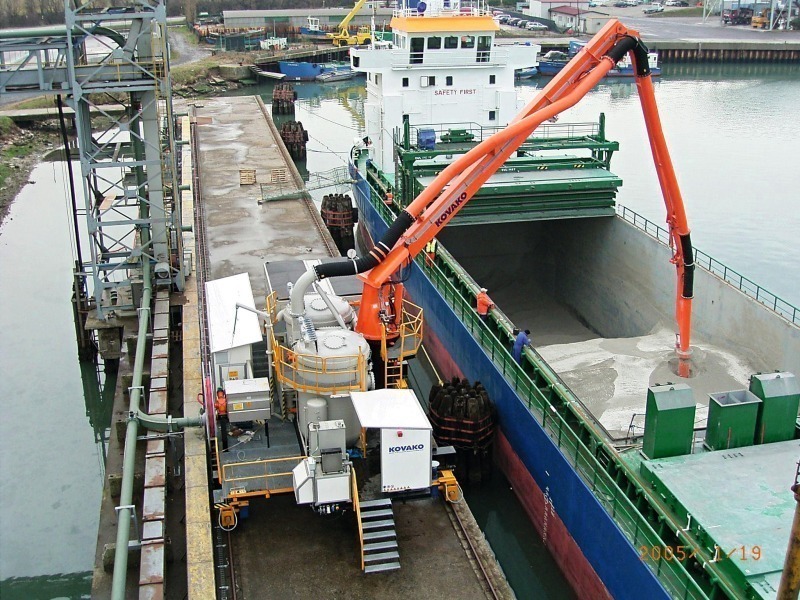
Recalibration
By doing this recalibration, all components will be one by one inspected, tested and where needed fixed or adjusted to it required settings. During this period, the operation of the entire system is down and requires therefore to be scheduled in advance for minimum impact to the daily operation.
Tuning and Tweaking
After the recalibration, it is needed to collect the data about the following;
- No more alarms and alarm list reset?
- No more internal leakages?
- All components able to be trouble free operated/controlled?
- Is the receiving part of the system to its design performance, like pressures, volumes, capacity?
- Is the conveying part of the system to its design performance, like pressures, volumes, capacity?
In case all above has been witnessed and filed, it is time to tune and tweak the entire system for working all together again.
As the system and her components are working as designed we need to take into account that each individual parameter chance will influence another part of the system. For example;
- It has been observed from the files that the receiving part of the system is underperforming
This underperformance could be caused by a variety of influences like: cargo conditions/specifications, crew operating performance/skills, control system settings, pressures, temperatures, etc.
Based on the skills of the tuning and tweaking party, a priority in the needed attention points and corresponding values is than selected and executed accordingly, while each adjustment/input is linked to another part of the system the level of experience comes into place on knowing which “wheel need to be turned/dialed”.
Case study
In this case study, we have a customer who mixes fly-ash with cement in a ratio of 30/70 assuming profit per ton sold mixed product is USD 10. The convey system he uses for collecting fly-ash is underperforming at only 100tph, meaning the needed time for him mixing both products becomes longer, while the selling rate to the market is now dropping. Actions are now required:
Step 01 (tuning and tweaking the convey rate of the fly-ask collecting system)
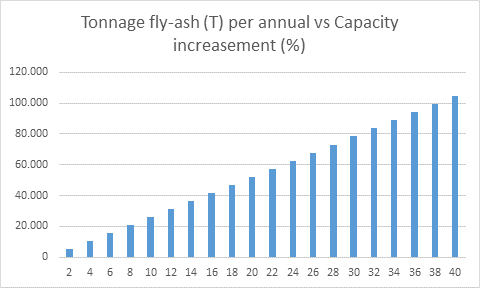
Let’s assume that by the correct tuning a convey increase rate of 8% is achieved, which results in approximately 20.000 ton extra fly-ash on an annual base is available for the customer to mix.
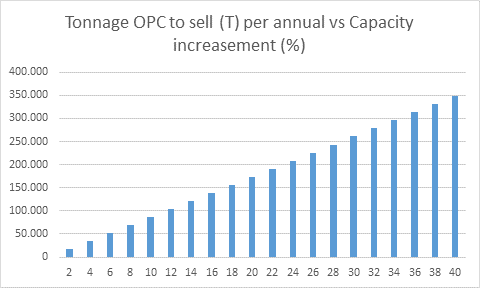
Now able to sell 8% more mixed product to the market per annual (approximately 66.000 ton)
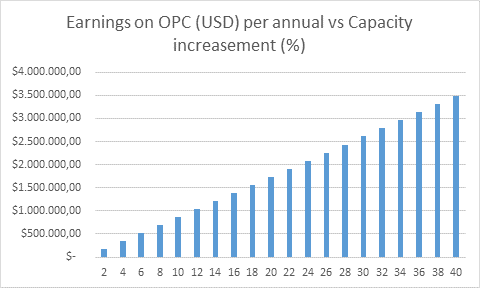
Now able to sell 8% more mixed product to the market per annual (approximately 660.000 USD earnings)
Summery
So, by investing let’s say 3 days per annual of tuning and tweaking (3 days of downtime of the system and not able to sell product to the market) much savings can be achieved, see below the summery.
- Each day of downtime will cost him 1.000 ton profit equals USD 10.000, in total USD 30.000 “investing”
- Earnings after tuning and tweaking is USD 660.000 per annual
- Efficiency ratio on tuning and tweaking is then approximately 4,5% this means that it costs the owner only USD 0,045 to generate USD 1 of profit!
- Return on “investment” is after only 17 days!
Much attention is given in the market to maintenance only, while an even higher efficiency ratio can be achieved via tuning and tweaking by a correct skilled party.
Based on more than 50 years of experience in this industry, Lion Bulk Handling is able to perform this acquisition for you. Book your visit here: Contact Lion
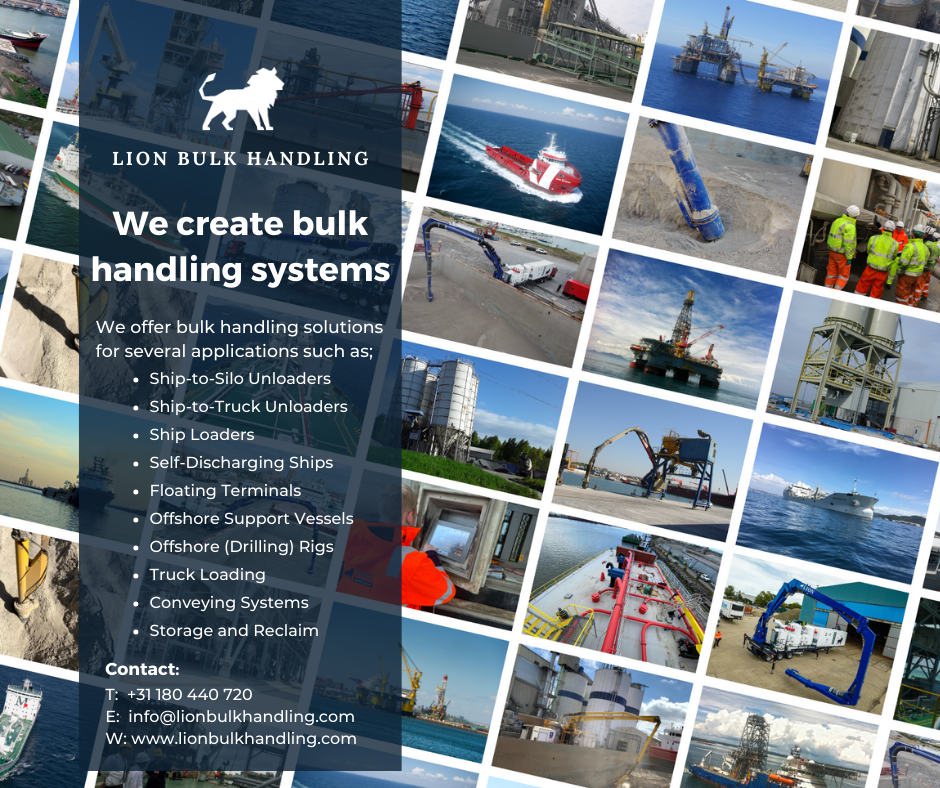
Lion Bulk Handling Solutions
In conclusion, investing in efficient bulk handling systems is paramount for businesses looking to streamline their operations and maximize productivity. Whether you’re in the manufacturing, cement, offshore or maritime industry, optimizing your material handling processes can lead to significant cost savings and improved efficiency.
If you’re interested in learning more about how bulk handling systems can benefit your business, don’t hesitate to reach out to us. Our team of experts is here to provide you with tailored solutions and answer any questions you may have. Contact us today for more information and take the first step towards enhancing your operations.


